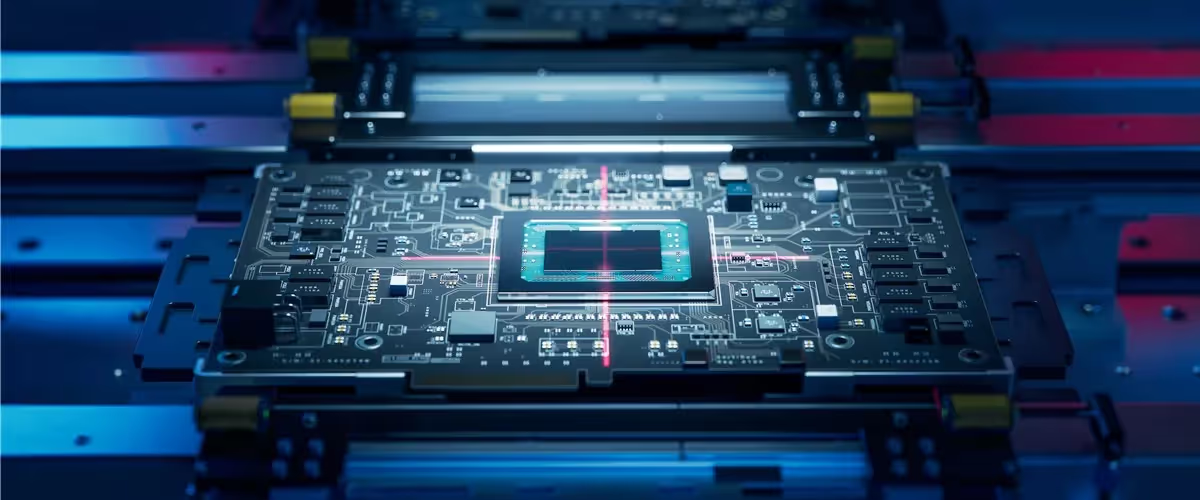x86 is the instruction set used by the x86 family of processors — a definition that is unhelpfully circular!
In understanding what x86 is and refers to, it’s helpful to have some grounding in a few core computing concepts. First, an instruction set can be (grossly over)simplified as the list of commands a computer processor will accept to execute a task. A processor refers to a microprocessor, a physical computer chip that is capable of performing complex instructions (that is, a set of instructions). Most commonly, the type of processor referred to in the context of an instruction set is a “CPU” or Central Processing Unit — the primary processor in any complex computer system. The CPU is responsible for orchestrating command and control across various pieces of hardware in a computer system, and primarily powers major end functions like the operating system and the running of applications.
What are x86 Processors?
x86 processors were initially developed by Intel in the late 1970s. Their history is long and complicated, involving several model names and the underlying evolution of the x86 instruction set (also known as the x86 ISA, or Instruction Set Architecture). Today, x86 processors are produced primarily by two companies: Intel and AMD. Other companies manufacture specialty x86 processors for embedded and industrial purposes, but these low-volume use cases are rather obscure and highly specialized.
Most modern desktop, laptop, and server processors are x86 processors. Or, rather, were until quite recently. The rise of ARM has displaced x86 in some of the laptop and even the server market because ARM processors consume much less power consumption and, often, cost a lot less. But, if you bought a personal computer or needed to build a server in the past 30 years, the overwhelming likelihood is that an x86 processor powered that system (with notable exceptions like Apple’s PowerPC, based on IBM’s POWER architecture).
The x86 processors produced by Intel (and AMD) have covered a wide gamut of use cases. x86 processors have been designed for laptops, desktops, servers, smartphones, PDAs, embedded systems, supercomputers, smartwatches, IoT devices, edge devices, automotive applications, network infrastructure, and more. Many of these use cases still exist today, though others are defunct (for example, Intel’s x86 smartphones and smartwatches never took off and have been effectively abandoned).
x86 processors can be packaged and designed for very high performance, very low power consumption, very low cost, or specific workload applicability. The x86 designator merely denotes compatibility with the x86 instruction set — the particular way an x86 processor is technically architected varies based on its designed purpose and the proprietary technology of the manufacturer of that processor. For example, while both Intel and AMD processors are x86-compatible, they have different performance and power consumption characteristics, and the companies have some fundamental philosophical differences in how they approach their particular microarchitectures. This is a long way of saying: Not all x86 processors are “the same” — far from it.
Why Is x86 So Popular?
The short answer is critical mass. Computers using x86 processors became immensely popular in large part thanks to the juggernaut tag team of IBM, Intel, and Microsoft. In the 1980s, IBM’s PCs were enormously successful, and most of those systems came equipped with Intel x86 processors and Microsoft’s DOS operating system (branded PC-DOS for IBM as OEM software). With the rise of “PC compatibles” throughout the period — computers designed to work with IBM-compatible software — the ecosystem effect took hold. By the 1990s, Intel’s x86 processors dominated the booming personal computer and corporate workstation markets. While competitor ecosystems did exist (particularly in the 1980s), none ever came close to usurping x86’s control of the marketplace.
Over time, the dominance of x86 became even more difficult to challenge. Most consumer and business software was designed and built for x86 systems, and what little was not tended to be either highly specialized in use or diminished in function or performance compared to the x86-compatible alternative. The extreme dominance of the Microsoft Windows operating system throughout the 1990s and early 2000s, especially, cemented x86 as the default processor architecture. Eventually, even Apple gave up on its PowerPC processors in favor of Intel x86, making MacOS an x86 operating system in 2005. (But as we’ll get to, MacOS has since become an ARM OS.)
Finally, though, x86’s dominance began to experience serious challenges, with the rise of mobility — notably, the smartphone. Smartphones today universally utilize ARM processors, and ARM has quickly expanded to achieve popularity in other computing scenarios and device form factors.
Are There x86 Alternatives?
Only one meaningful competitor to the x86 family of processors currently exists: ARM processors. ARM processors effectively power every smartphone and smartwatch on the planet and the vast majority of IoT devices. ARM processors are also gaining popularity rapidly in the embedded systems space and any use case involving high mobility. Most concerning to manufacturers of x86 processors, there is a growing contingent of ARM laptops and PCs entering the marketplace — especially from Apple. Apple’s A-Series and M-Series processors are ARM-compatible, though they only run operating systems built by Apple itself.
Aside from the above segments, x86 also faces threats from ARM in the server market. ARM processors are far more power-efficient and tend to scale cost-effectively in applications requiring a very high number of processing “cores” for multi-threaded applications or low energy consumption. The ARM server market is still relatively small, and it remains to be seen how much foothold x86 will give up in this space over the long run.
Another competitor to x86 (and ARM) exists in the form of RISC-V. While very few RISC-V processors are currently on the market, there is a high degree of interest in the RISC-V instruction set because it is an open-source technology. This means no licensing of patents or other intellectual property, and that anyone can freely modify the instruction set to fit a particular use case or design constraint. RISC-V is in the very early stages of its development as an ecosystem. Still, there is considerable excitement for its potential, and a number of big names have signed on to support the standard.


